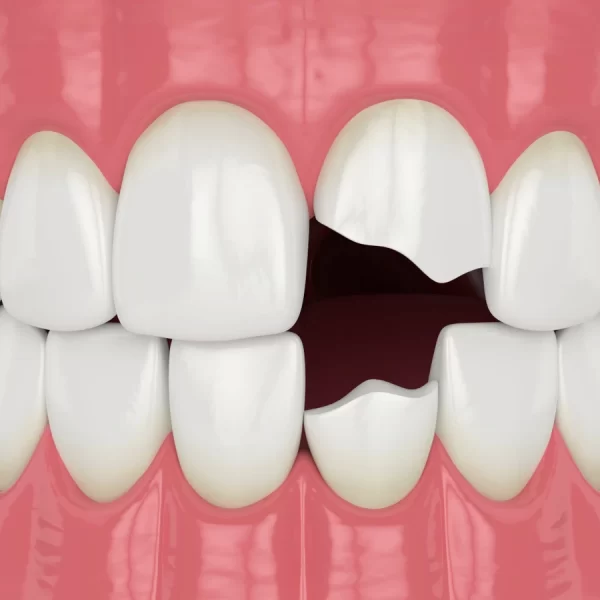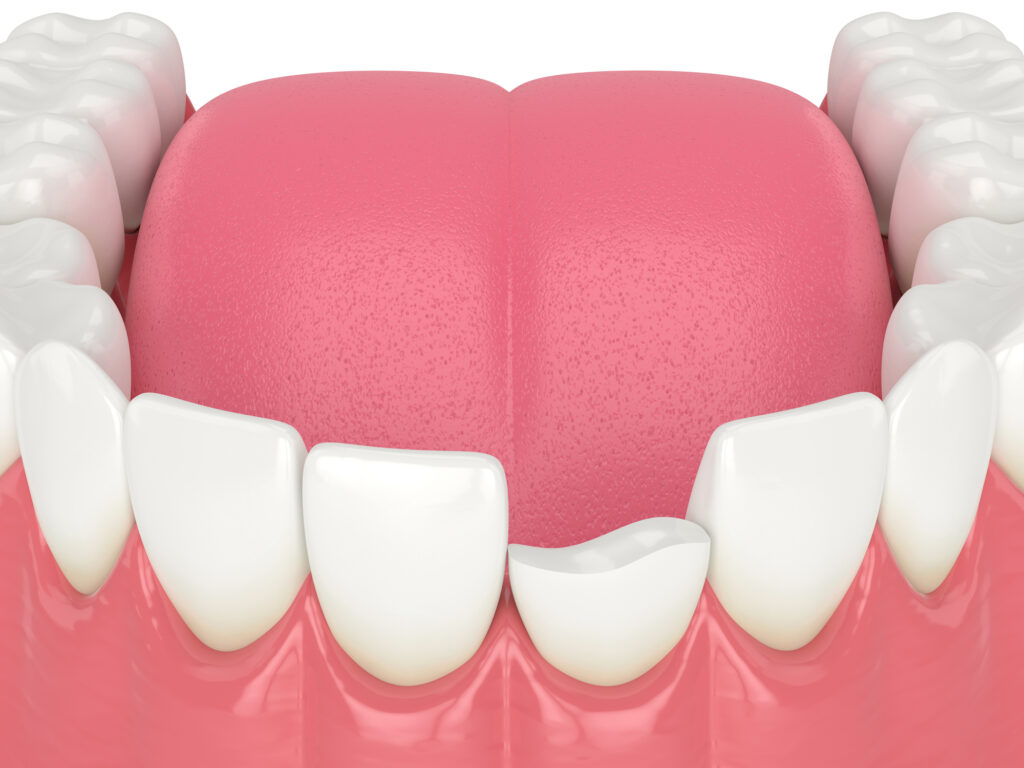Fixing a CHIPPED tooth at home
A chipped tooth refers to a situation where a portion of the tooth’s enamel (the hard, outermost layer of the tooth) has broken off or fractured. This can occur due to various reasons, such as trauma, biting on hard objects, accidents, or even as a result of normal wear and tear over time.
Don’t wait for these problems to arise. Seek professional dental care to address chipped teeth promptly and prevent complications.
In this video, you’ll discover temporary home remedies for managing a chipped tooth, including pain relief and care tips. Dr. Carmen will walk you through the steps and demonstrate the method for addressing this issue.
Start by gently rinsing your mouth with warm water to clean the area and prevent infection.
If the chip has sharp edges, use dental wax or sugarless gum to cover them. Simply soften it, mold it over the chipped area, and you’re good to go!
Over-the-counter pain relievers like ibuprofen can help manage any discomfort.
Be cautious about your food choices. Avoid hard, crunchy, or sticky foods that could worsen the chip. Opt for soft foods instead.
Maintain your regular oral hygiene routine, being gentle around the chipped area.
Remember, these are only temporary measures. It’s essential to visit a dentist for a permanent solution. Attempting major fixes at home can lead to further complications.
Fundamental part of chipped tooth:
Chipped teeth can range in severity from minor cosmetic issues to more substantial structural damage. The symptoms and consequences of a chipped tooth depend on the size and location of the chip. Some common signs of a chipped tooth include sharp edges, increased sensitivity to hot or cold temperatures, pain when biting or chewing, and in some cases, visible damage or roughness on the tooth’s surface.
Treatment for a chipped tooth can vary depending on the extent of the damage. It may involve procedures such as dental bonding, dental veneers, dental crowns, or even dental implants for severe cases. The specific treatment plan is typically determined by a dentist after a thorough evaluation of the chipped tooth.
Addressing a chipped tooth promptly is essential to prevent further damage, alleviate any discomfort, and restore the tooth’s appearance and function.
Dental wax for chipped tooth
Dental wax’s primary use is to protect the mouth’s sensitive areas such as the gums, lips, and cheeks’ lining.

How to use a dental wax

Three most common causes of a chipped tooth
(Bruxism)
Teeth grinding or clenching, often during sleep, can gradually weaken and chip teeth over time.
(Trauma)
Accidents, falls, sports injuries, or biting on hard objects can cause a tooth to chip.
(Weak Enamel)
Natural wear and tear, age, or poor oral hygiene can weaken enamel, making teeth more susceptible to chipping.
How are they treated?
Treatment for a chipped tooth depends on the severity of the chip and its location. Here are common methods for treating a chipped tooth:
This involves applying a tooth-colored resin to the chipped area and shaping it to match the tooth's natural appearance. It's a quick and cost-effective option for minor chips.
Veneers are thin, custom-made shells that cover the front surface of a tooth. They are suitable for more significant chips and provide a natural look.
Crowns are used for extensive damage. They cover the entire tooth, providing strength and protection. Crowns are especially useful for molars.
For severely damaged or completely broken teeth, dental implants may be necessary. This involves replacing the damaged tooth with an artificial one.
Minor chips that don't affect the tooth's structure may only require smoothing and polishing to prevent rough edges.
If the chip extends into the tooth's pulp (inner nerve), a root canal may be needed to remove damaged tissue and prevent infection.
In some cases, orthodontic treatment like braces may be recommended to correct the bite and prevent further chipping.


🔍 Did you know that a chipped tooth isn't always easy to spot?
🦷 Sometimes, the damage can be hidden beneath the surface. Here’s what you need to know:
Inside your tooth, tiny microscopic cracks can develop, even if there’s no visible chip. These cracks may not be immediately painful, but they can worsen over time.
As these cracks grow, they can lead to increased sensitivity and discomfort, especially when exposed to hot or cold temperatures. Over time, they might even lead to more significant problems like fractures or infections.
This is why regular dental check-ups are crucial. Dentists can detect these hidden issues through X-rays and thorough examinations, preventing further damage and discomfort.
To protect your teeth, it’s essential to practice good oral hygiene and address any signs of grinding or clenching (bruxism) promptly. Wearing a mouthguard if you grind your teeth can also help prevent these microscopic cracks.
So, even if your tooth looks intact, remember that dental health goes beyond appearances. Don’t hesitate to schedule a check-up if you suspect any issues.
Subscibe on our Youtube ...
Join us as we explore the world of dentistry, providing you with valuable insights, tips, and expert advice to maintain a healthy and confident smile.